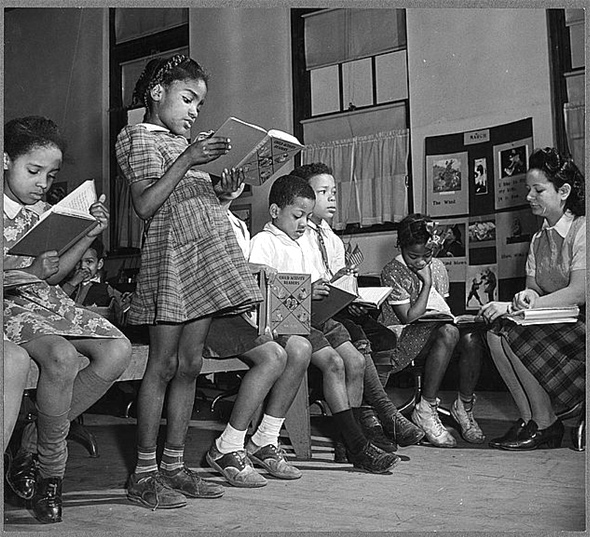Teaching U.S. History in a Failing School (Part 2)
How to interpret the three history lessons I watched Mark Allison, a veteran teacher, teach?
Allison had prepared an interactive lesson with a series of slides on the Civil Rights movement. He asked his students to inspect each slide carefully and tell what they saw and speculate, alright hypothesize, about what the facts they see may add up to. He completed the lesson within the 40 minutes allotted to him in the bell schedule.
The lesson reflected his passion for the subject (a glass case filled with civil rights photos along one wall of the room) and for his students (one wall of student photos in his classes). Before during and after the lesson, students responded to his requests and questions. Students did engage in the activities he designed for them. At no time in any of the three lessons I observed were students defiant, unresponsive, or dulled into inactivity. The rapport between teacher and students as he went through the lesson prodding them to apply their present experiences to the past was evident to me.
Were there someone else in the room besides me, say, the principal, a district official, or another teacher there to judge his performance, surely that evaluator could find items to praise and holes in how and what Allison taught in these three lessons.
Perhaps, that observer might have assessed Allison’s performance in the way that Becky Reed, a Delaware social studies teacher did in a comment for this post:
I think this represents exactly how I would have taught a lesson 25 years ago (okay, maybe 15). I would have been very proud of the activity that took me an entire evening to create, time that I could have spent with my family. In reflection (then) I would have thought the lesson was a success; students were engaged, discussion in small groups was apparent, primary sources were used, and students “got” that the Civil Rights Era was about freedom and equality.Sadly, I think that many administrators would have rated this lesson as an Teaching U.S. History in a Failing School (Part 2) | Larry Cuban on School Reform and Classroom Practice:

